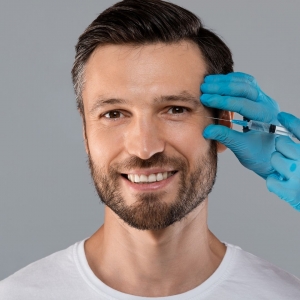It is perhaps unsurprising in America’s compensation culture. A controversial product like Botox is a bit of a sitting duck for legal allegations and, in April this year, manufacturers Allergan found themselves at the centre of exactly such a court battle.
After claiming that Botox injections left him with Brain Damage, 67-year-old Douglas Ray Jnr was awarded a whopping $212 million in compensation from Allergan. His is one of 3 court cases brought against Allergan, linking Botox to Brain Damage (the other 2 will be heard later this year). An inevitable media-frenzy followed.
This is despite the fact that no firm evidence was produced definitively proving Botox to be the cause of Mr Ray Jnr’s symptoms. Allergan also protest the allegations that they provide inadequate information about the potential risks associated with the drug. The company are now challenging the charges.
So CAN Botox cause Brain Damage?
Of course, regardless of our skepticism about the “trigger-happy claims” tendencies in the U.S., allegations such as these are bound to have patients – and practitioners – concerned.
At around the time of this court case, The Journal of Neuroscience (April 2nd issue) featured an Italian study conducted on adult rats. Type A Botulinum Toxin injected into one side of the rats’ brains was demonstrated to appear on the other side as minute protein particles. The ‘Botox causes Brain Damage’ media frenzy began, neatly tying in with the Allergan court battle.
Yet, as Fabulously40 bloggers Lois Stern and Patty Kovacs point out, the rats received purified botulinum toxin. The Botox typically injected into patients is not the same. And although migration of protein particles might be worrying, it cannot be taken as definitive proof of brain damage. In fact, senior Harvard surgeon Gary Borodic emphasises: “There is nothing in this paper that says these injections will damage neurons or that there are long-term side-effects.”
Be Careful of Misinterpreting the Facts
The fact that the Journal of Neuroscience article could create such media hype, despite being based on very little solid theory, has to make Practitioners also question the basis of the court case against Allergan.
For starters: what actually constitutes “Brain Damage”? Very few articles about this case actually describe Mr Ray Jnr’s symptoms in tangible detail (though this does not necessarily mean they are not physically as well as mentally present). And of the 2 other upcoming cases against Allergan, at least one of them (according to sideeffects.net) ‘linked the [Botox] injection to a person’s limited ability to perceive the emotions of others’. This seems a rather woolly definition of Brain Damage. It also reminiscent of the symptoms of Autism, bringing with it the connotations of another recent media hype surrounding an injectable drug treatment: the children’s MMR injections. As earlier stated: any controversial drugs or treatment programme becomes a scapegoat for criticism and compensation claims. But it is very hard to prove a definitive link when you are talking in terms of emotional capacity damage.
Secondly, it must be pointed out that Mr Ray Jnr did NOT receive Botox treatment for lines or wrinkles. By not clarifying this, the media has generally allowed the public to think that he was…and therefore created the mass panic of hundreds of Botox affeciendos! He was in fact having treatment for hand tremor and writer’s cramp. One of the charges brought against Allergan by the Justice Department are for promting Botox for “off label” use such as these,plus migraine headaches, juvenile cerebal palsy etc. All of these uses for Botox require different concentrations and methods of treatment which may involve a greater element of risk and have been tested for less time, on a lesser number of patients than Botox treatment for wrinkles.
In the Journal of Neuroscience featured study, the rats were injected directly into their brains…hardly a realistic testing condition for patients receiving treatment in standard cosmetic procedures. However, perhaps “off label” uses of Botox should be approached with greater caution until further investigations are carried out.
Finally, Douglas Ray Jnr’s ‘significant and catastrophic injury to the brain’ came about not through the Botox treatment itself but as a result of ‘severe accute immune reaction’ (BNET). This is where the charge against Allergan for failing to provide adequate information about the possible side-effects and risks of Botox comes into place. It is the duty of all good Aesthetic Practitioners to sufficiently warn their patients that, as with all drugs, Botox is not without risks. However (and especially in the case of the dosages used for anti-wrinkle treatment) these risks are well tested and marginal. A case like Mr Ray Jnr’s would be the absolute exception, not the norm.
And this is why, although it is of course important to express concern and to do your research when cases like the Allergan Botox Brain Damage trials come to light, we do not feel that Cosmetic Practitioners need to be putting Botox on the backburner just yet.
Article by Cosmetic Courses, leading UK providers of Aesthetic Injectables training (Botulinum Toxin and Dermal Fillers) to medical professionals. Call 0845 230 4110 for more details, or visit our website.












